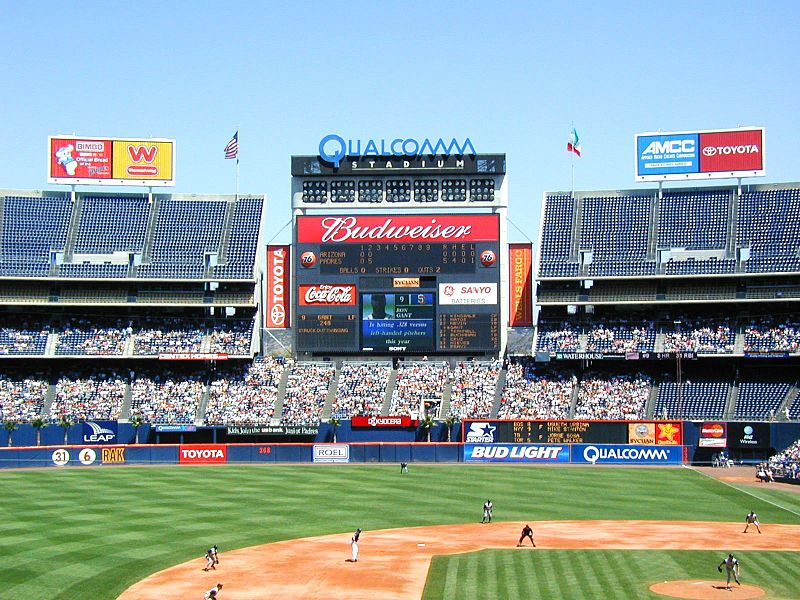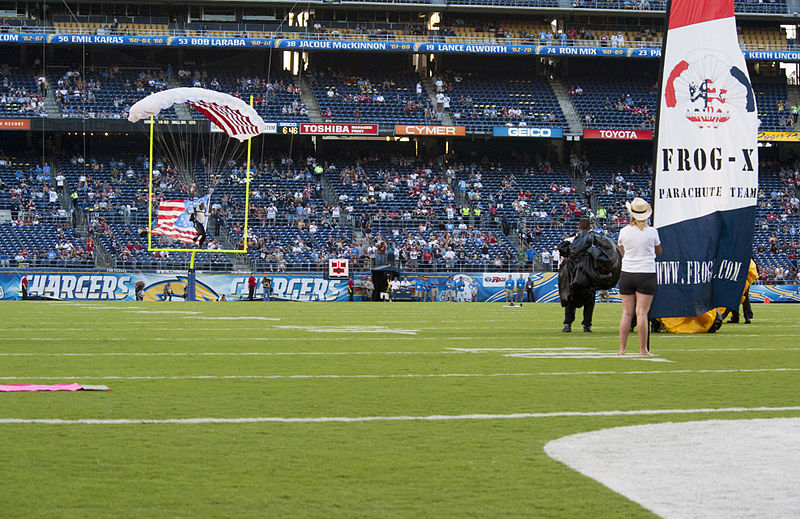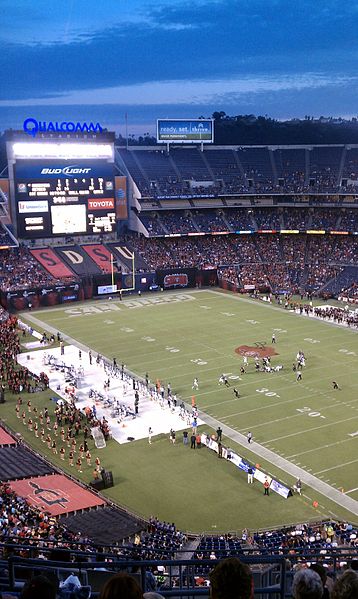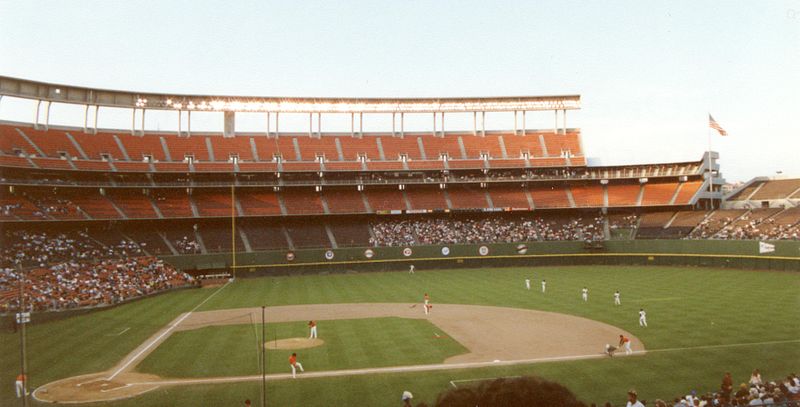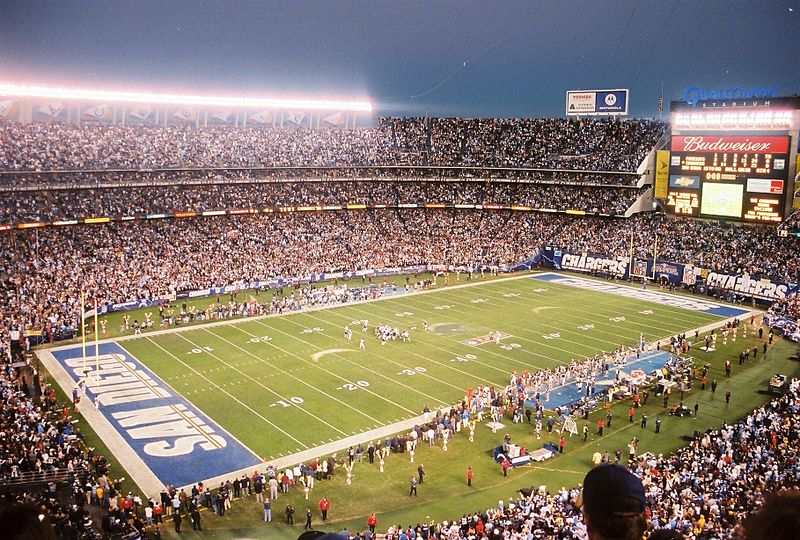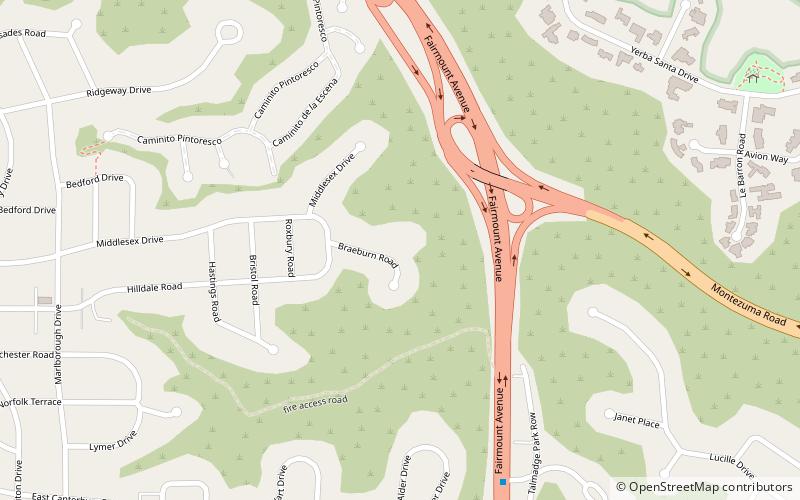San Diego Stadium, San Diego
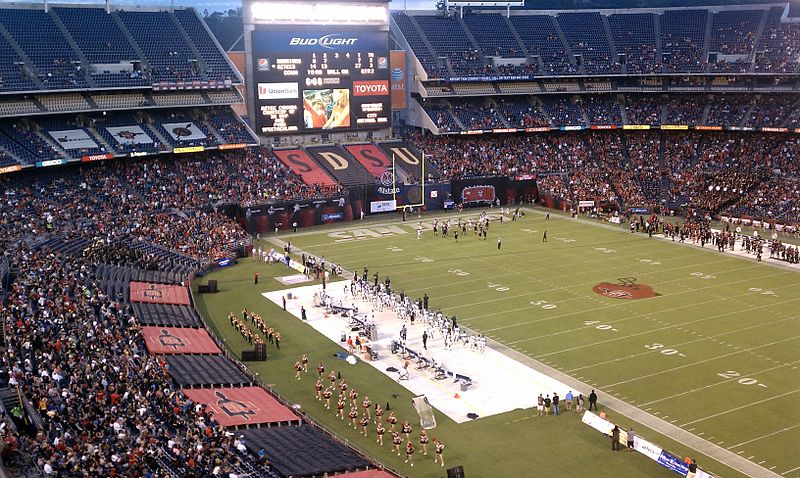
Facts and practical information
San Diego Stadium, previously known as Qualcomm Stadium and originally named San Diego Stadium, stands as a testament to the rich sporting heritage of San Diego, United States. Built in 1967, the stadium was a multipurpose venue that hosted both baseball and football games, as well as concerts and other large-scale events for decades.
The stadium, which boasted a seating capacity of around 70,000, was primarily the home of the San Diego Chargers of the National Football League (NFL) until their relocation to Los Angeles in 2017. It also served as the home field for the San Diego Padres of Major League Baseball (MLB) until 2003, when they moved to Petco Park. The San Diego State University Aztecs football team also called the stadium home, as did the Holiday Bowl, an annual college football bowl game.
San Diego Stadium was renowned for its open-air design, offering fans an immersive experience with the sunny Southern California weather. The venue hosted three Super Bowl games (XXII, XXXII, and XXXVII), drawing fans from across the nation to witness the pinnacle of NFL competition. It was also the site of two Major League Baseball All-Star Games and numerous other memorable sports moments.
Despite its storied past, the stadium faced issues of aging and the need for modernization, which ultimately led to its closure. In March 2020, the city of San Diego began the process of demolishing the stadium to make way for a new development, including a modern stadium for San Diego State University.
San Diego Stadium – popular in the area (distance from the attraction)
Nearby attractions include: Mission San Diego de Alcala, Stadium Golf Center & Batting Cages, Roman Catholic Diocese of San Diego, Beth Sarim.
Frequently Asked Questions (FAQ)
How to get to San Diego Stadium by public transport?
Light rail
- Stadium • Lines: 530 (4 min walk)
- Fenton Parkway • Lines: 530 (14 min walk)


